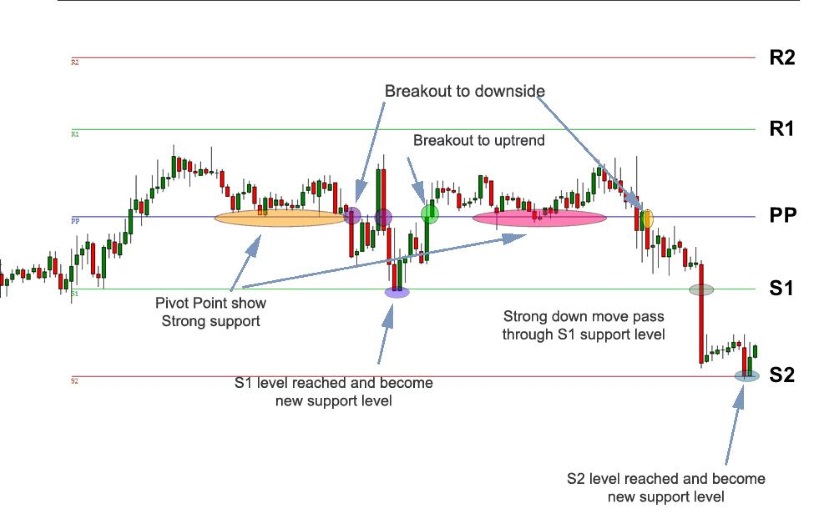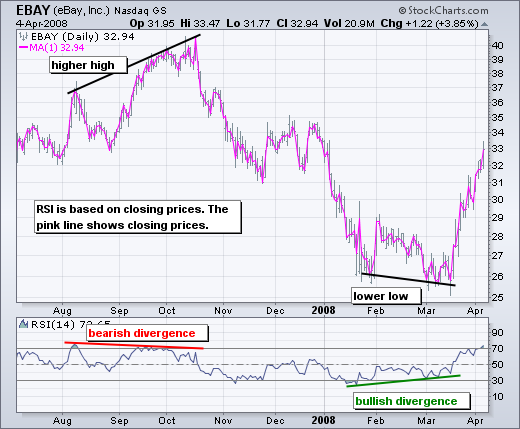Contents:
Fewer values in the tails and fewer values close to the mean (i.e. the curve has a flat peak and has more dispersed scores with lighter tails). Therefore, a distribution with kurtosis greater than three would be labeled a leptokurtic distribution. Kurtosis is a statistical measure used to describe the degree to which scores cluster in the tails or the peak of a frequency distribution.
Finally, click on ‘OK’ to generate the histogram plot showing the normality distribution of the residuals . I hope, by now you have got a basic understanding of Descriptive statistics in data science. If you want to earn via Data Scientist as a career, enroll for our DataTrained Full Stack Data Science Course with Guaranteed Placement. The main result of a correlation is called the correlation coefficient (or “r”). The closer r is to +1 or -1, the more closely the two variables are related. In school, we have read that average is simply the sum of all the events divided by the number of events.
Mean or Average is a central tendency of the data i.e. a number around which a whole data is spread out. In a way, it is a single number that can estimate the value of the whole data set. Standard deviation is a common statistical tool used to estimate the total risk of a stock or an index. It is used by financial analysts to estimate the range within which a stock or an index returns are likely to fall.
If r is close to 0, it means there is no relationship between the variables. That can show whether and how strongly pairs of variables are related. Average point-to-point returns are from 28 Nov to 28 Nov for the 2-, 3- and 5-year periods, starting 2016. However, financial markets often diverge from the assumption of symmetry.
Moving from the illustrated uniform distribution to a standard distribution, you see that the “shoulders” have transferred some of their mass to the center and the tails. If a statistical data set is regularly distributed or skewed, the box plot shape will show it. The distribution is symmetric when the median is in the centre of the box and the whiskers on both sides are roughly the same. Firstly, according to the output of the data the value is positively skewed(R & Python), positive skewness indicates a distribution with an asymmetric tail extending toward more positive values. You might have heard of the term ‘bell curve’, a curve that resembles the shape of a bell when plotted on a chart.
Kurtosis
It serves to measure risk, as the abnormal returns on some instances could go beyond 3-times the standard deviation limit, according to the theory of normal distribution. However, specifying a imply, commonplace deviation, skewness, and kurtosis just isn’t enough to uniquely outline a distribution. So what it’s actually telling you is that it’s much less probably that your knowledge are normally distributed . You take a sample from your course of and take a look at the calculated values for the skewness and kurtosis. However, when excessive kurtosis is present, the tails lengthen farther than the + or – three commonplace deviations of the normal bell-curved distribution. The place σ is the standard deviation.The kurtosis of a standard distribution is zero.
When our sample size is large, it is so said that our mean comes out to be more accurate. The mean gives us the confidence intervals and from that we can have the range of values around which we can expect the mean to be located. We analysed the data for the constituent stocks of BSE500 index and used weekly returns data for each of these 500 stocks for the past two, three and five years. In the 5-year study period, the outperformance was more than 3.5-times.
It takes into account the sample size and it subtracts three from the kurtosis. If you are involved about skewness as well, then AD and Shapiro-Wilk are your folks. Shapiro-Wilk test has the most effective energy for a given significance, however it’s gradual when coping with giant samples, and AD follows closely enough. There is a Royston’s approximation for the Shapiro-Wilk check that permits to make use of it for bigger samples.
What is the difference between ANOVA and ANCOVA?
After performing the above procedure, ‘sktest – Skewness and kurtosis test for normality’ box will appear . Next, use the below command in order to generate the residuals in the data set. If r is positive, it means that as one variable gets larger the other gets larger. If r is negative it means that as one gets larger, the other gets smaller (often called an “inverse” correlation). You can reduce or eliminate internal risks by allocating capital across different stocks or sectors. Distributions with low kurtosis exhibit tail information which might be usually less excessive than the tails of the conventional distribution.
If the kurtosis is close to 0, then a standard distribution is commonly assumed. If the kurtosis is less than zero, then the distribution is light tails and is called a platykurtic distribution. If the kurtosis is bigger than zero, then the distribution has heavier tails and known as a leptokurtic distribution. There are three categories of kurtosis that may be displayed by a set of data.
We can find how much the frequency curve is flatter than the normal curve using measure of kurtosis. In statistics kurtosis refers to the degree of flatness or peakedness in the region about the mode of a frequency curve. As explained above, these definitely help us to know about the shapes of the distribution; more importantly whether we are working with normal distribution or not. When we talk in the field of business, it offers summary of varied types of data and comes of use to particularly investors and brokers to put to use historical account of the return behaviour. It is done by performing analysis so that one is able to make wiser investing decisions can be made in the future.
All measures of kurtosis are in contrast against a normal normal distribution, or bell curve. In the above table, notice that Tata Motors had the highest standard deviation as well as the highest excess kurtosis. This means that since the start 2021 till the time of writing, compared to the other two stocks, Tata Motors not only had higher dispersion around the mean return but also had longer tails.
Popular Questions of Descriptive Statistics In Data Science
But the basis of this theory lies in the techniques that a data scientist uses to analyze that data to make predictions further. So, a data scientist first tries to understand the data by applying descriptive statistics in data science involves summarizing and organizing the data so they can be easily understood. Descriptive statistics in data science, unlike inferential statistics, seeks to describe the data but does not attempt to make inferences from the sample to the whole population.
Hey C-Suite: AI Won’t Save You! – Forbes
Hey C-Suite: AI Won’t Save You!.
Posted: Wed, 25 May 2022 07:00:00 GMT [source]
The worth is often compared to the kurtosis of the traditional distribution, which is equal to three. If the kurtosis is bigger than three, then the dataset has heavier tails than a normal distribution . In actual life, you don’t know the real skewness and kurtosis as a result of you have to pattern the method.
Then they determine whether the observed data fall outside of the range of values predicted by the null hypothesis. The significance level is the probability of rejecting the null hypothesis when it is true. For example, a significance level of 0.05 indicates a 5% risk of concluding that a difference exists when there is no actual difference. Lower significance levels indicate that you require stronger evidence before you will reject the null hypothesis.
Kurtosis is measured by moments and is given by the following formula. What you appear to be asking for here is a normal error for the skewness and kurtosis of a pattern drawn from a standard population. Note that there are various ways of estimating things like skewness or fat-tailedness , which will clearly have an effect on what the standard error will be. The commonest measures that people consider are extra technically known as the third and 4th standardized moments.
- The value is often compared to the kurtosis of the normal distribution, which is equal to 3.
- Given the skewness and Kurtosis we could predict the shape of a probability distribution.
- Furthermore, a moderate level of positive skewness suggests that the returns of Tata Motors are right-skewed.
- There are three categories of kurtosis that may be displayed by a set of data.
- Shapiro-Wilk test has the most effective energy for a given significance, however it’s gradual when coping with giant samples, and AD follows closely enough.
But sure, distributions of such averages may be near regular distributions as per the CLT. The skewness properties of a distribution are rather more important for choosing applicable statistical exams than its kurtosis. Due to the central limit theorem, repeated sampling from a extremely kurtotic distribution (e.g. uniform or bimodal) will approximate the traditional with pattern sizes as low as five or ten.
It means that you’ve a platykurtic distribution (the tails are heavy, the distribution has broad shoulders, the height is broader and wider than if kurtosis was a larger value.). Secondly, the value of the skewness and kurtosis are different in R and Python, but the actual effects are more or less the same. And different software (ex. R, Python, SAS, Excel etc) using different processes to calculate skewness & kurtosis brings the same ultimate result.
How Can the Sum of Skewed Variables Be Normally Distributed? – Quality Digest
How Can the Sum of Skewed Variables Be Normally Distributed?.
Posted: Mon, 03 Jan 2022 08:00:00 GMT [source]
When in a kurtosis tells us about the of independent variables consist of both factor and covariate , the technique used is known as ANCOVA. The difference independent variables because of the covariate are taken off by an adjustment of the dependent variable’s mean value within each treatment condition. If the skewness is less than -1 or greater than 1, the data are highly skewed. Positive Skewness means when the tail on the right side of the distribution is longer or fatter. Distributions are technically defined as having a kurtosis of zero, although the distribution doesn’t have to be exactly zero in order for it to be classified as mesokurtic.
A statistical process which is used to take off the impact of one or more metric-scaled undesirable variable from the dependent variable before undertaking research is known as ANCOVA. Get the confidence interval in which the mean length of all the fishes should be. The probability of success in an interval approaches zero as the interval becomes smaller.
Suppose we have house values ranging from $100k to $1,000,000 with the average being $500,000. Example —An airline company wants to survey its customers one day, so they randomly select 555 flights that day and survey every passenger on those flights. There are numerous other blogs that you can follow with Dexlab Analytics.
Skewness is used as an alternative risk measurement tool when the data is exhibits asymmetrical distribution. A stock with negative skewness is one that generates frequent small gains and few extreme or significant losses in the time period considered. On the other hand, a stock with positive skewness is one that generates frequent small losses and few extreme gains. If a stock’s return follows a normal distribution pattern, then their will be no skewness.
However, to achieve the identical results with a skewed distribution, a lot larger samples are wanted. Most often, kurtosis is measured towards the traditional distribution. QQplots, residual vs predicted values plot (very usefull graph when assessing normality and log-normality), histogram AND skewness & kurtosis are good clues. Don’t forget also to take into account the sample size of your data which will are likely to its actual distribution with a excessive pattern measurement. Measures of spread include the range, quartiles and the interquartile range, variance, and standard deviation.
Furthermore, a moderate level of positive skewness suggests that the returns of Tata Motors are right-skewed. What we see as the most commonly used descriptive statistics is them mean. It is a means that helps to find out the central tendency and is to be analysed with a level of coefficient.





